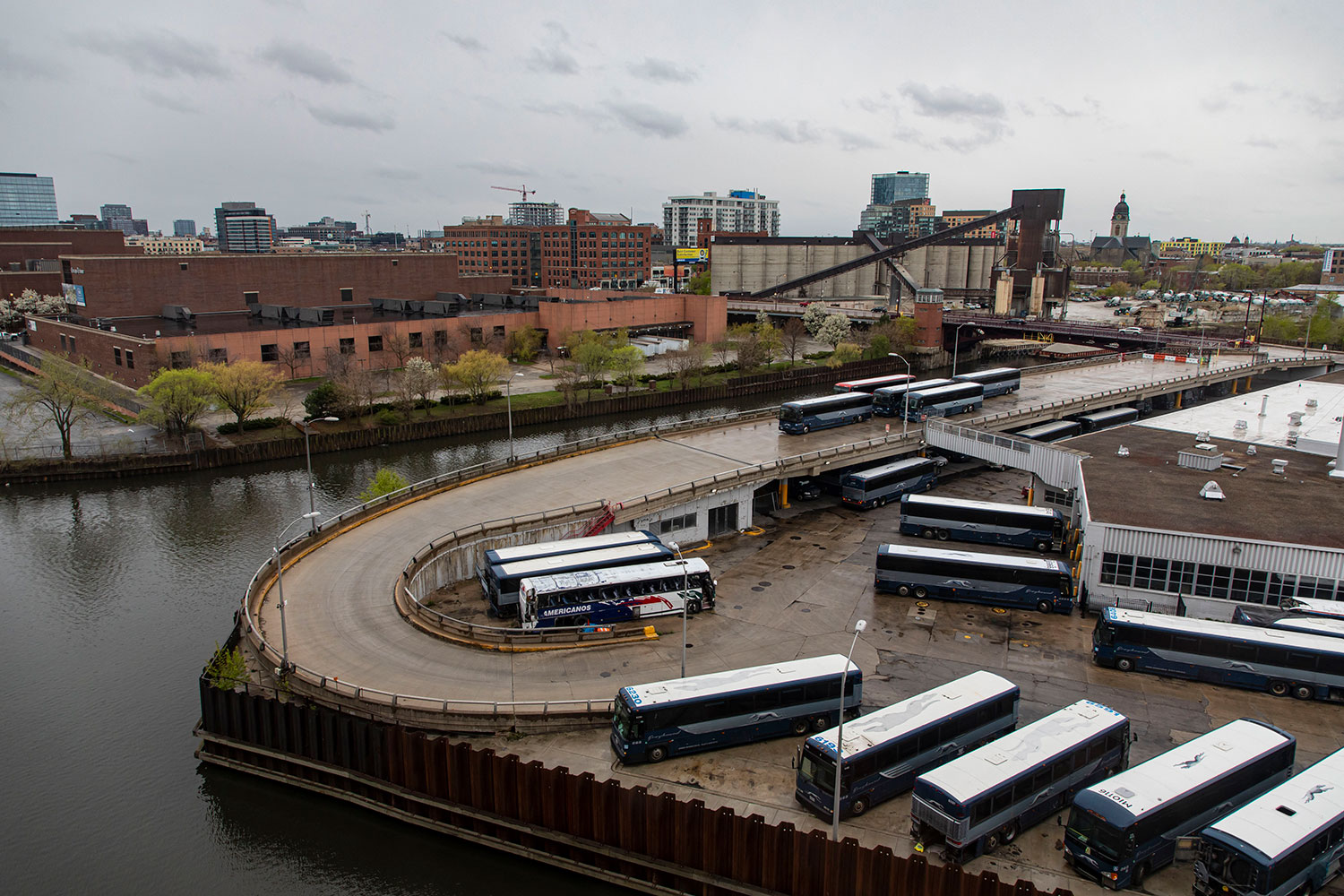In a vacant lot at the southern tip of Goose Island, where Greyhound once repaired buses, backhoes are digging the foundations for Halsted Point: five towers with 2,650 apartments, a 247-room hotel, and 100,000 square feet of office space. According to the real estate site The Real Deal, the developer, Omni Group, is “the first to plant a residential real estate flag on Goose Island, which until 2017 was only zoned for industrial use.”
That’s the modern history of Goose Island, which besides the eponymous brewery is also the site of the Goose Island Shrimp House, the CTA Material Distribution Center, Big Bay Lumber, and the Mars Wrigley world headquarters. The apartment-dwellers will not be the first residents of Goose Island; however, we suspect they will be much more respectable than those who dwelt on Goose Island before them.
Consider this account of “The Great Goose Island Expedition,” from a 1930 edition of the Chicago Daily News. In a Wells Street tavern, a man named Randolph Streeter pulled an “old, tattered map” of Goose Island from his pocket. The map had belonged to John Mullen, who was known as the “mayor of Goose Island” in the 1870s.
“Would you believe, gentlemen,” Mr. Streeter told his companions, “there are still a few of the original natives on this island. Take a look at this map. There is ‘Little Johnnie’s tavern’ on North Branch Street. I might say here, gentleman, that a good deal of my information comes from John T. Gibbons, a retired policeman. He tells how the islanders were a God-fearing people, despite the fact that there was no house of worship there. They had to go a long way over the mainland to a parish church. He goes on to describe hot summer nights when folks would ‘rush the can’ to McCormick’s place up near Division Street; he tells of the big swing the kids enjoyed — almost 30 feet high — at the juncture of North Branch Street and Cherry Avenue; of Jack Butcher’s saloon and the Saturday night dances in the basement of Mike Meyer’s place; of ‘Mayor’ John Mullen and his Irish wit; of the baseball diamonds and swimming holes at the north end, among the hot weedy prairies.”
(Goose Island, we should note here, is not a natural island. Chicago’s first mayor, William Ogden, who owned clay pits there, had a canal dug from Chicago Avenue to North Avenue as a shortcut past a bend in the Chicago River.)
Randolph Streeter related those reminiscences with a nostalgia for a century passed. Contemporary descriptions of life on Goose Island were much less romantic. In the 19th Century, the settlement was known as Kilgubbin, and its settlers were Irish squatters living in seven-foot-by-nine-foot shanties around which they raised hens, cows and pigs, tended by fleshy, red-haired, broomstick-wielding housewives. Flocks of geese paddled in ponds and hissed at visitors from the mainland, lending “Ogden Island” an informal name which eventually became official.
“The shanties are generally divided into three apartments,” related a Chicago Times reporter who made an expedition from the mainland to the island in 1865, and returned with typical nativist WASP disdain for “Patrick and Bridget.” “In the first, which may be termed the parlor, are quartered the cow and pig. In the second apartment, or the dining room, the goslings and geese, hens and chickens roost, secure from prowling marauders of policemen. In the third apartment, separated from the others by a chinkless partition, are between ten and a dozen children, lying upon the floor in rows, in the most squalid rags and filth.”
Goose Islanders were poor, but they were proud. Being Irish, they produced policemen, firefighters, and politicians: Mayor William Dever worked in a Goose Island tannery as a young man. Most of all, Goose Islanders considered themselves a people distinct from the “mainlanders” surrounding them on all sides. Consider this story about how Goose Island got its name, told by an elderly cottage-dweller in the 1930s.
“My mother told me,” she said, “’twas one night a gentleman, who had been a bit too friendly with the bottle, lost himself and fell asleep in some unknown place. When he woke up he was surrounded by hissing geese. ‘I must be on Goose Island,’ said he, and that’s how it got its name.”
Who was the drunk? “‘Twas a gentleman from Chicago,” the old woman said.
As the Chicago River became an industrial estuary, the cottagers were gradually pushed out, replaced by docks and warehouses and factories — the Goose Island we know today. But even the Chicago River, which has a reputation for sluggishness and filth, is now thought of as a lifestyle amenity, a handsome view from a 14th floor balcony. In 2017, the City Council rezoned 700 acres between Chicago Avenue and Fullerton Avenue: once reserved for manufacturing, the land is now open to all development. That plot includes the Lincoln Yards project, as well as Goose Island.
I think we can say, though, that Goose Island will never again suffer the reputation for poverty, filth, and crime that made the place so repugnant to 19th century mainlanders. It’s hard to raise pigs in a high rise.



